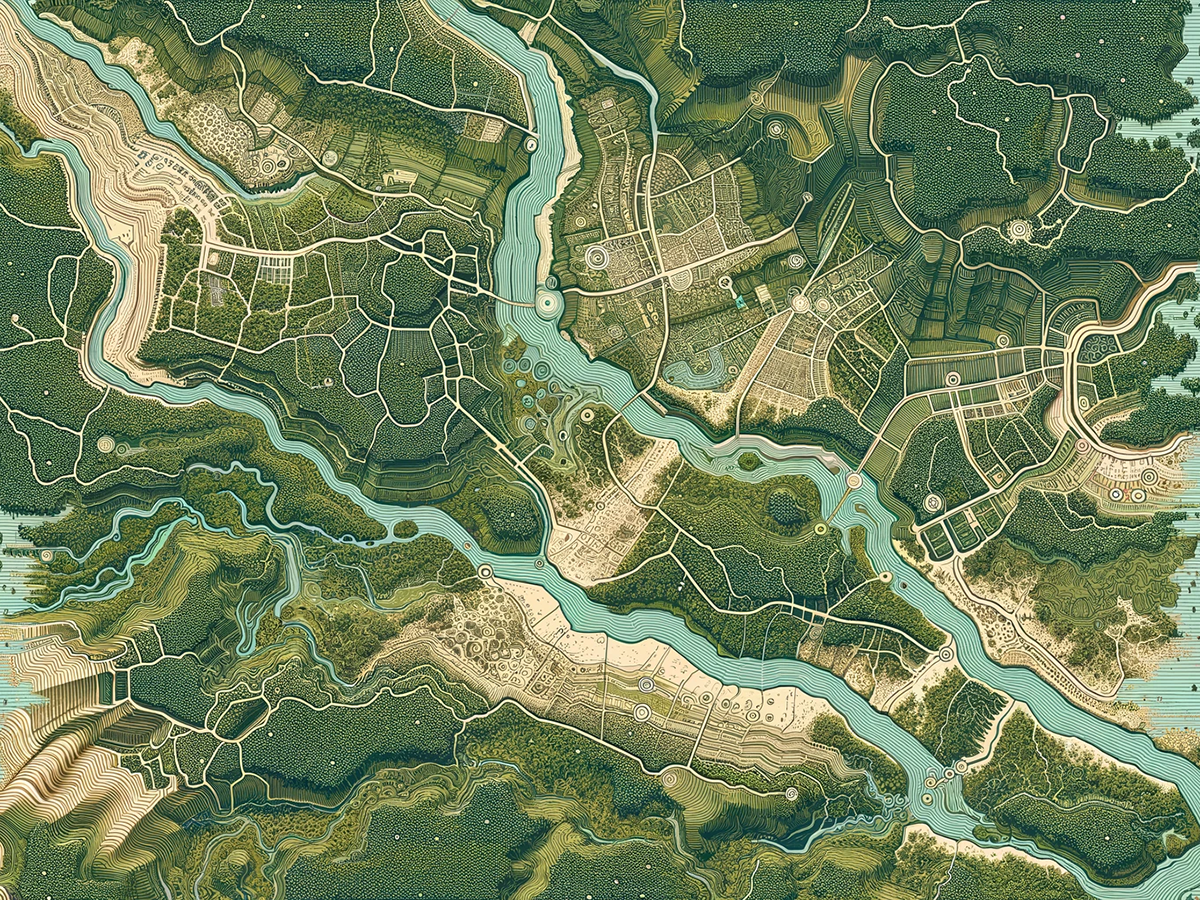Unveiling the ancient amazon with LiDAR
In the dense and remote expanse of the Amazon, LiDAR is revolutionising the field of archaeology and unlocking never before seen secrets.
This sophisticated tool is piercing through the thick forest canopy, unveiling previously undiscovered ancient settlements and providing unprecedented insights into pre-Columbian urbanism.
Why LiDAR?
Light Detection and Ranging (LiDAR) works by emitting hundreds of thousands of infrared beams per second from an aircraft. When these beams strike the Earth's surface, they bounce back, providing a measure of distance. This data, once processed, creates high-resolution images that effectively 'deforest' digitally, exposing the ground and any archaeological features present.
LiDAR is extremely useful in the Amazon because it can penetrate the dense forest canopy, revealing the ground and any archaeological features hidden beneath. This technology generates high-resolution images, allowing for the digital removal of trees to expose the earth's surface. It's particularly beneficial for mapping and understanding complex ancient urban centres that are otherwise obscured, facilitating the study of the Amazon's pre-Columbian civilizations without the need for disruptive and time-consuming ground surveys.
Secrets of the Amazon

Recent LiDAR surveys, as reported by the Smithsonian, have revealed astonishing findings in the heartland of Bolivia’s Casarabe culture, dating from approximately 500 to 1400 C.E. The technology has identified 26 unique sites, including two large urban centres, Landívar and Cotoca, previously obscured by the forest canopy. These sites display sophisticated urban planning, featuring successive rings of moat and rampart fortifications, artificial terraces, and monumental architecture, such as conical pyramids over 70 feet tall.
The implications of these discoveries are profound. They challenge the long-held belief that the Amazon was an untouched wilderness, suggesting instead a landscape significantly impacted by human activities. This civilisation's ability to remodel the landscape, evident in the construction of extensive causeways, canals, and engineered parklands, points to a highly organised society with advanced knowledge in agriculture, engineering, and urban planning.
Another recent significant finding was also unlocked in the depth of the Amazon which shows an ancient city, concealed for a millennia in the Upano area of eastern Ecuador. Once again, these findings, which revealed an intricate network of roads and canals connecting houses and plazas, fundamentally alter our understanding of Amazonian history and build upon previous findings. It demonstrates that ancient Amazonians lived in sophisticated urban societies that were connected via intricate road networks.
Speaking to the BBC, Prof. Stephen Rostain remarked: "This is older than any other site we know in the Amazon... it changes our idea about what is culture and civilisation." Co-author Antoine Dorison added, "Most people picture small groups... living in huts - this shows ancient people lived in complicated urban societies." This city, dating back 2,500 years and hosting tens of thousands, if not hundreds of thousands of people, showcases the capabilities of LiDAR technology in archaeology, providing a comprehensive survey of the area after 25 years of research.
Marrying tech and archaeology
Moreover, LiDAR's revelations underscore the importance of technology in archaeology. By providing a tool to see what was previously invisible, LiDAR is not only expanding our understanding of Amazonian civilisations but also transforming the methodologies of archaeological exploration. This non-invasive technology allows researchers to conduct surveys over large areas in a fraction of the time it would take through traditional ground-based methods. LiDAR is just one technology being deployed, others include:
- Ground-Penetrating Radar (GPR): Maps underground features without excavation.
- 3D laser scanning: Creates detailed models of archaeological sites.
- Photogrammetry: Uses photographs to make precise 3D reconstructions.
- Drones: Provide aerial photography and mapping of inaccessible areas.
- Satellite imagery: Detects archaeological sites from space.
- Digital documentation and Virtual Reality (VR): For immersive exploration and preservation.
- Portable XRF analysers: Analyse material compositions on-site.
- DNA analysis: Unravels genetic information of past populations.
- Isotope analysis: Provides data on ancient diets and migrations.
Conclusion
As we continue to deploy LiDAR and other remote sensing technologies, we can expect to uncover even more about the ancient Amazon. These technologies hold the key to answering longstanding questions about human history in one of the world's most biodiverse regions and beyond, shining a light on civilisations that flourished in harmony with the natural world.
The fusion of technology and archaeology, as demonstrated by LiDAR in the Amazon, is a testament to human ingenuity, both ancient and modern. It serves as a reminder that, through innovation, we can uncover the past to inform our future, revealing the rich tapestry of human civilisation that has shaped our world.









